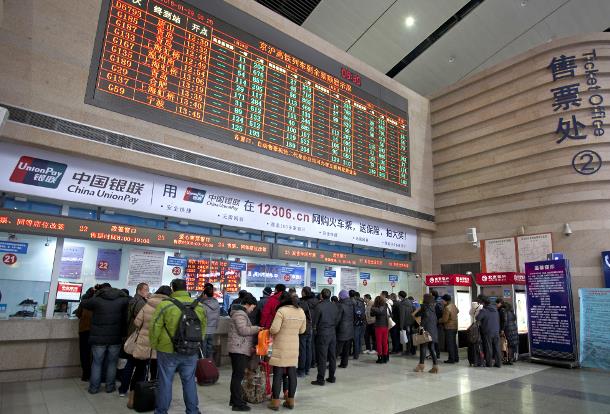ChinaTravelNews, Ritesh Gupta - Programmatic advertising is experiencing growth in China, and it is important for the travel sector to assess how to make the most of this opportunity.
Programmatic advertising refers to automated planning, buying, placement and optimization of media inventory through a digital platform. One model of programmatic buying is called real-time bidding (RTB), where within 100 milliseconds of an Internet user landing on a webpage, the advertisers decide whether to bid for the ad inventory on page, and what price they are willing to offer, based on data of that netizen. The advertiser offering the highest price would win the bid and serve the ad. This model works similarly as in stock exchange.
As a specialist in this arena, Shawn Bao, VP, Chinapex explains: programmatic has three buying models, RTB (real-time bidding on open exchanges), PMP (private marketplace or private RTB), and PDB (programmatic direct buying).
· Open exchange RTB refers to the model where there can be unlimited buyers/advertisers and sellers/media publishers. The buyer bidding for highest price would win the bid and serve their ad.
· Private RTB means the number of buyers and sellers are limited or invite-only.
· PDB means potentially only one buyer has reserved the media inventory for itself, to be operated programmatically. This model is similar to traditional direct buy except data can be used here. Preferred deal is a subset of PDB where only a percentage of all inventory is reserved for the advertiser.
Travel sector – among early adopters
Charlie Wang, Mindshare’s Head of Digital Beijing, says, “Travel clients are very much focused on direct response. Programmatic allows targeting of consumers when there’s an immediate need for travel information, which leads to better booking conversions.”
Wang added: “Programmatic is only 20-30% of overall display market in China compared to 60-70% in the U.S. So we can say it's still its infancy. Travel clients are one of the first adopters of programmatic and RTB, as it's a very effective tactic driving direct response.”
Bao says, “Programmatic advertising started in 2012 in China. The niche market has been growing nearly 100% annually. In 2014, 15% of all digital display advertising has turned programmatic. It is estimated that by 2017, around 50% of all digital display ads will become programmatic.”
Bao added that as one model of programmatic, RTB is the first model being adopted by Chinese travel advertisers.
“Large Chinese travel advertisers such as Ctrip have been embracing programmatic with alacrity,” he pointed out.
Digital marketer and hospitality industry executive Hugh Xu says programmatic advertising has been around for years in China. Sectors like FMCG, consumer electronics etc. have embraced it, but it is very new to hotels.
“There are many specialists out there today to help out, but hotels need to step up on several counts. Considering the fact that hotels are outnumbered in terms of the marketing budget by OTAs, it is vital for hotels to optimize their ad spend via precise targeting. Programmatic media buying is definitely an opportunity for hotels,” he says.
Hotels need to catch up
Xu added that hotels don’t realize the value of data.
“Hotel executives need to work on their data strategy for sure. Today hotels are running ad campaigns, and they need to build on it once guests visit and stay at the property. Data mining and initiatives like CRM platform can help in a targeted approach towards advertising. Hotels need to learn a lot more about the guests, their preferences, and tally it with their behaviour to move towards smarter ad buying,” he says.
According to him, by leveraging available data, there is an opportunity to refine retargeting and remarketing – with focus on cross-selling and up-selling. Also, by working profiling guests, hotels need to build on profiles of say leisure traveller and leverage third party data to target incremental business.
Conversion – major attraction of travel sector
Bao explained that there are four aspects of benefits from programmatic advertising:
1. Use of audience data
· With traditional media buying, ads are served to anyone that happens to view the webpage where the ad is positioned. Programmatic advertising can ensure the ad is only shown to relevant audience based on their past data. For instance, we can set the campaign to be targeting only audience who used to browse or search for 5-star hotels in the past therefore reducing budget wasted showing ads to irrelevant audience groups.
· In addition, the frequency and number of total impressions can be controlled, so the same ad will not be shown to the same person for too many times, which also improves customer experience.
2. Use of algorithms and technology
· Machine learning algorithms would help optimize the campaign KPIs for maximum return on investment.
· Automation of campaign planning, execution, and reporting reduces human labour and increases work efficiency.
3. Media inventory
With programmatic advertising, the ads follow the target audiences cross different media publishers, maximizing audience reach and coverage.
4. Real-time trading and optimization
As data reports are generated real-time during campaign, strategies can also be adjusted immediately accordingly, to reach highest possible cost effectiveness and ROI.
“For instance, in a programmatic advertising campaign Chinapex did for Jumeirah hotel for the Chinese market, we are able to optimize the CPC to be 1/5 of what the advertiser has through traditional media buy, and an ROI of 1 : 9.2, which is exceedingly well compared to their traditional campaigns,” shared Bao.
Experts point out that in terms of the screens/ devices, programmatic advertising on PC/ laptop computers have become mature/ developed in China, while programmatic mobile has also started in 2014. This year, programmatic TV has also taken place where TV ads will in the future be different for each audience based on past program selecting behaviors. Moreover, cross-device programmatic advertising will be a big trend, as Internet users are spending more time on mobile devices.
Wang said travel advertisers should assess rising availability of data, as publishers gradually open up to advetiser DMP’s.
Travel clients should acquire more behaviorial datasets to help them better target consumers, recommended Wang.




